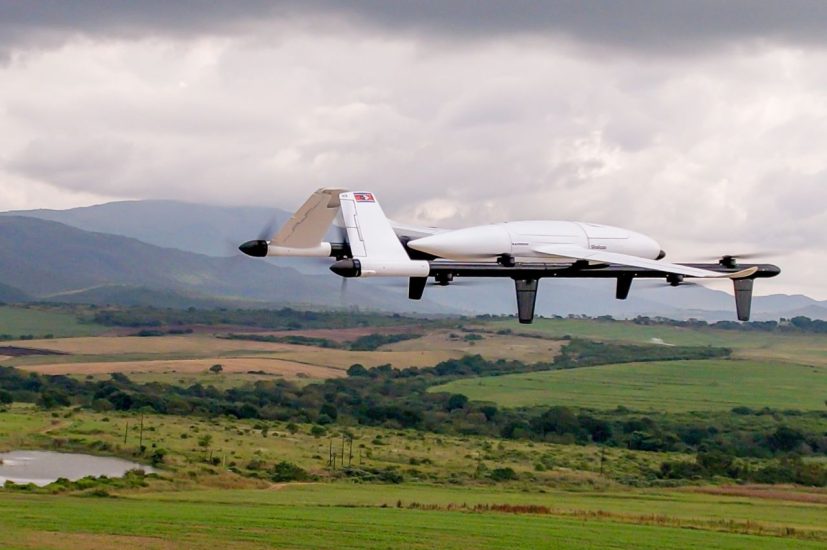Several key efforts and collaborations are shaping the future of uncrewed traffic management (UTM) across Africa as drone operations expand in the region.
The Wakanda Beyond Peer Action Group, which brings together nine African Civil Aviation Authorities to adapt, test and apply uncrewed aerial systems (UAS) technology, is working to increase understanding amongst regulators on the risks and challenges for policymakers, the possible solutions and the repercussions of the regulations from a business and impact perspective. Through regular coaching calls, the Peer Action Group provides regulators the opportunity to develop solutions suitable for their contexts while providing exposure to approaches they can utilise when developing drone (or other) policy and regulations in the future. The group’s members collaborate under a regulatory sandbox which is testing drone corridors and live tracking.
The Drones Doing Good Alliance, a partner in the Peer Action Group along with the Frontier Technologies Hub, has also created the Business Booster Initiative, designed to help drone businesses scale efficiently. This programme combines critical capacity-building support and market linkages needed to grow businesses in drone hardware, software, and services. Phase one focused on the agricultural drone sector in Kenya.
To effectively integrate drones into the national airspace, Civil Aviation Nigeria (NCAA) has created a dedicated UAS Integration Unit in the NCAA to act as a hub for the registration, licensing, and monitoring of UAS. It is now mandatory to obtain a remote pilot licence to operate a drone in Nigeria.
At Kigali International Airport, the Rwanda Civil Aviation Authority (RCAA) is operating a radio frequency detection system that can detect both drones and their pilots without disrupting surrounding communications. The CERBAIR/InnovATM technology enables the RCAA to track collaborative drones as well as detect non-collaborative UAS.
RCAA has also released its draft UAS regulation for public review. It is working on modernising national UTM policy with the stakeholder feedback received.
In a continuing effort that commenced in 2023, the International Civil Aviation Organisation (ICAO) and the African Civil Aviation Commission (AFAC) have promoted harmonised UTM through a series of working groups. ICAO and AFAC are currently working to enable cross-border drone operations under Single African Air Transport Market (SAATM) protocols.
Many locations in Africa benefit from drone logistics, especially medical and healthcare services. Zipline began blood and medical products deliveries in Rwanda in 2016 and has since expanded to food, retail, agriculture products, and animal health products. The company also operates in Ghana, Nigeria, Cote d’Ivoire and Kenya.
Speaking in an interview with the United Nations agency for digital technologies in November 2024, Rwandan Innovation Minister, Ms. Paula Ingabire, said her government was looking at ways of leveraging emerging technologies to transform the way they do business in Rwanda. “We are using drones to deliver blood to different hospitals and healthcare centres across Rwanda. We have seen a lot of improvement in healthcare delivery, thanks to drones. We are able to save lives. It used to take us three hours to deliver blood, now it has come down to 26 minutes using drones”.
The Luke Commission, a nonprofit providing free healthcare in the Kingdom of Eswatini in southern Africa, launched the country’s first long-range medical drone network in 2024. Powered by rechargeable batteries, the drones provide medications, cold-chain items, vaccines, blood units, lab samples and other urgently needed items to patients and healthcare workers. Meanwhile, in Botswana, Avy is providing healthcare logistics using Aera drones.
In Malawi, the government is collaborating with UNICEF on a humanitarian drone corridor. It is the first in Africa and one of the first globally with a focus on humanitarian and development use. “In the case of transportation and logistics, drones can deliver medicine and resupply health centres, creating speed and efficiencies in situations where road travel would take too long,” UNICEF said. “With cameras and remote sensing, drones can provide rapid information about populations affected by mudslides or other emergencies, long before a traditional car and paper assessment might be able to tell us where supplies were needed. In situations where health centres, schools, or populations may need connectivity and the internet, drones can provide access where mobile networks may not exist.”
At higher altitude, Airbus subsidiary AALTO HAPS Ltd completed its first successful stratospheric flight with the Zephyr High Altitude Platform Station (HAPS) from its purpose-built HAPS facility in Laikipia County, Kenya in February. AALTO secured permissions to establish the facility for stratospheric operations during 2024, following 18 months of regulatory engagement and technical studies to facilitate flight approvals.
New projects like the EU-funded WildDrone are also taking to the skies. WildDrone launched drone beyond visual line of sight (BVLOS) operations at Ol Pejeta Conservancy, Kenya in January, after securing the necessary flight permits. The team is developing the use of drones for wildlife conservation.
In South Africa, SSASS Holdings recently hosted a demonstration at Wonderboom National Airport in Pretoria, focused on improving visibility and oversight of low-altitude traffic. The session, attended by air traffic personnel and stakeholders, introduced alternative surveillance approaches that could support safer integration of drones into controlled airspace and strengthen situational awareness around airports and remote operations.
The African Drone Forum, which brings together drone professionals, startups, and national ecosystem specialists, is calling for expanded drone corridors across Africa to enable research and commercial BVLOS development in more test zones. The forum also wants to see data sharing agreements for cross-border operations, harmonised BVLOS guidance and interoperability standards established to ensure that drones can connect seamlessly with UTM and ATC systems.
For more information
Image: The Luke Commission




